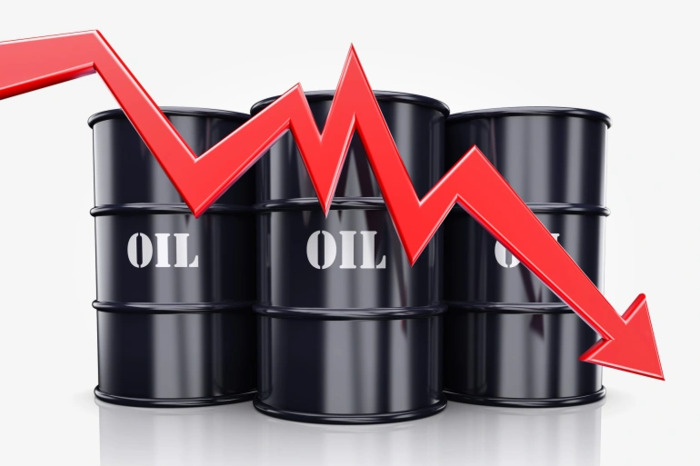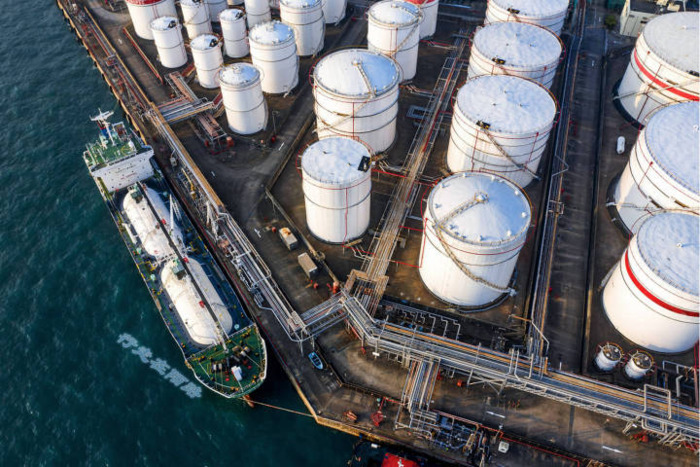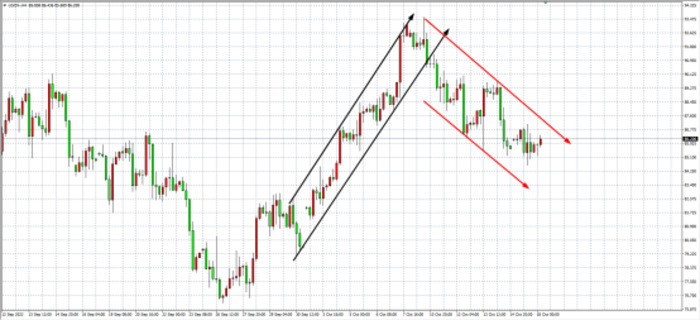Oil prices come to a crossroads, can the UAE be the key to breaking the game?
 2022-10-18
2022-10-18
 1433
1433
The global economic outlook continues to be cloudy, and the US mid-term elections are approaching; the market weighs the Fed's policy prospects, and the dollar falls short-term; the United States wants to accelerate the price cap on Russia's oil and natural gas. Or become the key to an unexpected breakout.
Oil falls to three-week low
WTI crude oil closed up slightly by 0.14% on Monday (October 17), and once fell to an intraday low of $84.63 during the session, setting a new three-week low since October 4. It is worth noting that on the same day, the US dollar index once again broke down from the 112.0 level to the intraday low of 111.67. The economic outlook is cloudy and the US mid-term elections are approaching, causing the market to re-evaluate the Fed's monetary policy prospects. The Fed will hold two policy meetings during the year (November and December), and the US core CPI in September announced last Thursday (October 13) rose by 6.6% year-on-year, the highest since August 1982.
The Fed has repeatedly stressed its determination to control inflation, and the current benchmark interest rate is at 3.00%-3.25%, the highest interest rate level since the subprime mortgage crisis in 2008. Market expectations for the final value of the benchmark interest rate in 2023 have been raised from 4.0-4.5% to 5%. The author believes that although the effect of the Fed in controlling inflation does not seem to be ideal, it is expected that the Fed will not easily reverse its policy of suppressing demand by tightening monetary policy without a significant fall in inflation. Gita Gopinath, deputy managing director of the International Monetary Fund (IMF), said that inflation in the United States is very stubborn, and the Fed should persevere and continue to tighten monetary policy, otherwise it will lose its credibility. In addition, with OPEC's announcement in early October to cut production by 2 million barrels per day, the supply side of the global oil market has become more tense. It is foreseeable that if the Fed loosens and tightens monetary policy and economic growth resumes, this may mean that the market needs an additional 2-3 million barrels per day of oil.

Rising oil prices and the end result of a longer stalemate in the Russian-Ukrainian conflict may perpetuate high global inflation for a longer period of time. For the oil market, the short-term focus may be on the G7 countries' discussions on the price ceiling of Russia's oil. Although the Fed is unlikely to ease policy, continued sharp interest rate hikes in the short term will make the U.S. economy unbearable. The continued increase in interest rates means that the U.S. government needs to pay more interest on its debts. The U.S. debt in fiscal year 2022 exceeded $30 trillion, and the outstanding U.S. federal government debt reached $31.1 trillion, approaching the statutory requirement of $31.4 trillion. debt ceiling.
X Factor: UAE
After OPEC announced production cuts, the United States immediately expressed strong dissatisfaction, saying that it would stop arms sales to Saudi Arabia and other Middle Eastern countries, withdraw troops and anti-missile systems, and re-examine allies. In addition, the White House also said that it will continue to impose sanctions on the arms trade between Russia and Iran.

On Monday (October 17), according to market sources, U.S. Deputy Treasury Secretary Adeyemo met with UAE officials on issues such as oil price caps and Russian sanctions. This is despite the UAE expressing support for Saudi Arabia's efforts to support energy stability and security following the OPEC+ production cut. The United Arab Emirates and Saudi Arabia are the few oil-producing countries that have the ability to increase production among the current OPEC members. More importantly, the UAE has been willing to increase production since 2021. In mid-September, the UAE’s Abu Dhabi National Oil Company, ADNOC, said it hoped to produce 5 million barrels per day of crude oil by 2025, faster than its previously announced target for 2030. That means the country may try to increase production capacity further to 6 million bpd by 2030. It is foreseeable that once the pessimistic outlook of the global economy is digested by the market, and the high oil price will help shale oil production increase, the UAE may become an "unstable factor" in OPEC+. But until then, oil prices still look set to benefit from the European energy crisis and OPEC+ production cuts to limit further downside.

The previous rally of U.S. crude oil was blocked at the $90 mark and then fell back. The trend has changed from long to short, and the direction has turned downward.
Looking forward to the market outlook, the $90 mark has become an important short-term resistance for oil prices. The mid-term downward trend has not changed, suggesting that the oil price is expected to further test the $80 and $70 levels in the future. To reverse the decline, it needs to effectively break through the $90.0 mark.
The above information is provided by special analysts and is for reference only. CM Trade does not guarantee the accuracy, timeliness and completeness of the information content, so you should not place too much reliance on the information provided. CM Trade is not a company that provides financial advice, and only provides services of the nature of execution of orders. Readers are advised to seek relevant investment advice on their own. Please see our full disclaimer.

CM Trade
As a world leading financial trading platform, CMtrade Provides comprehensive one-stop trading services and opportunities for traders.
[Products]
The platform provides over 32 kinds of popular financial products such as forex, precious metals, crude oil, indices, cryptocurrencies and more.
[System]
2 top trading systems CM Trade MT4 / CM Trade APP, powerful and easy to operate
[Service]
Comprehensive market news, professional market analysis, 7*24 hours online customer service
[Advantage]
Low cost, high leverage, flexible one-stop all day two-way trading.
[Authority]
Licensed and strictly regulated by authorities. Traders deposits are independently kept by the bank. Fast deposit and withdrawal. Fair, efficient and transparent trading environment.
CM Trade Mobile Application
Economics Calendar
MoreYou May Also Like



 简体中文
简体中文
 ภาษาไทย
ภาษาไทย
 繁體中文
繁體中文
 Indonesia
Indonesia











